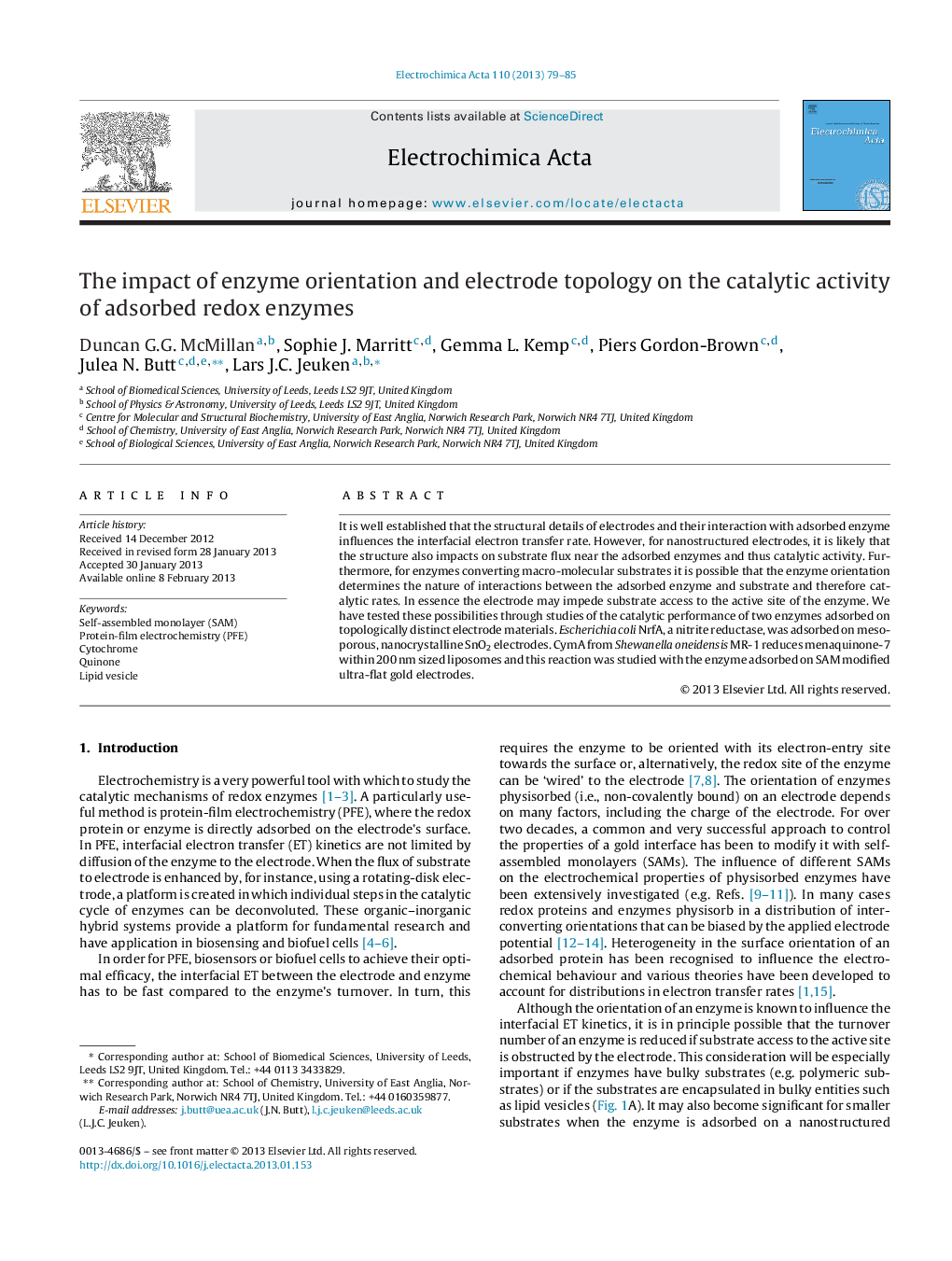| Article ID | Journal | Published Year | Pages | File Type |
|---|---|---|---|---|
| 6615341 | Electrochimica Acta | 2013 | 7 Pages |
Abstract
It is well established that the structural details of electrodes and their interaction with adsorbed enzyme influences the interfacial electron transfer rate. However, for nanostructured electrodes, it is likely that the structure also impacts on substrate flux near the adsorbed enzymes and thus catalytic activity. Furthermore, for enzymes converting macro-molecular substrates it is possible that the enzyme orientation determines the nature of interactions between the adsorbed enzyme and substrate and therefore catalytic rates. In essence the electrode may impede substrate access to the active site of the enzyme. We have tested these possibilities through studies of the catalytic performance of two enzymes adsorbed on topologically distinct electrode materials. Escherichia coli NrfA, a nitrite reductase, was adsorbed on mesoporous, nanocrystalline SnO2 electrodes. CymA from Shewanella oneidensis MR-1 reduces menaquinone-7 within 200Â nm sized liposomes and this reaction was studied with the enzyme adsorbed on SAM modified ultra-flat gold electrodes.
Related Topics
Physical Sciences and Engineering
Chemical Engineering
Chemical Engineering (General)
Authors
Duncan G.G. McMillan, Sophie J. Marritt, Gemma L. Kemp, Piers Gordon-Brown, Julea N. Butt, Lars J.C. Jeuken,
